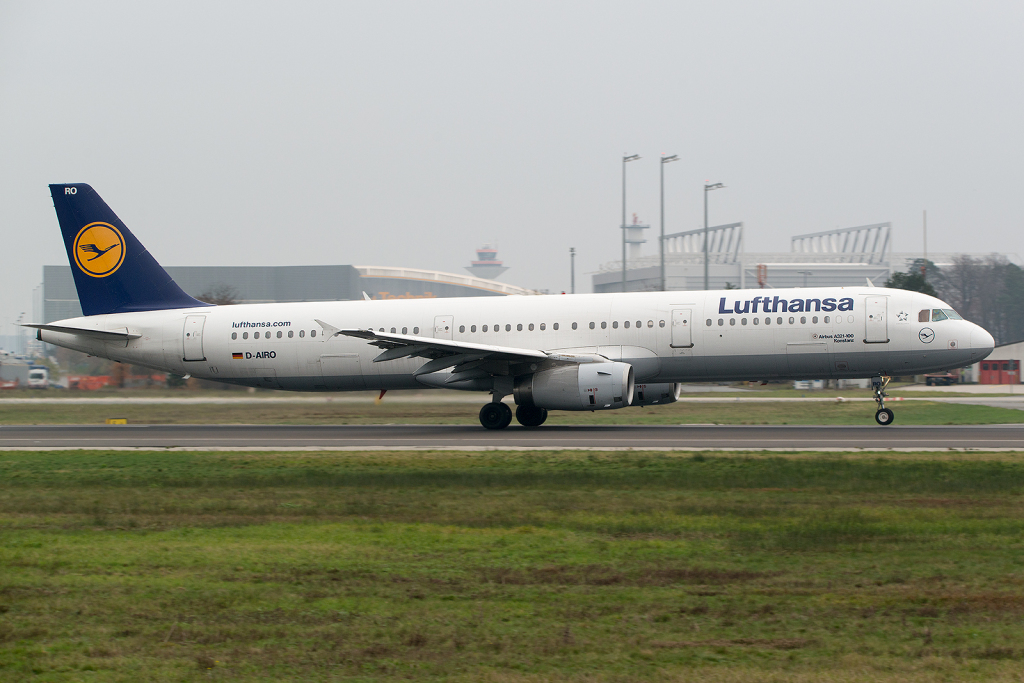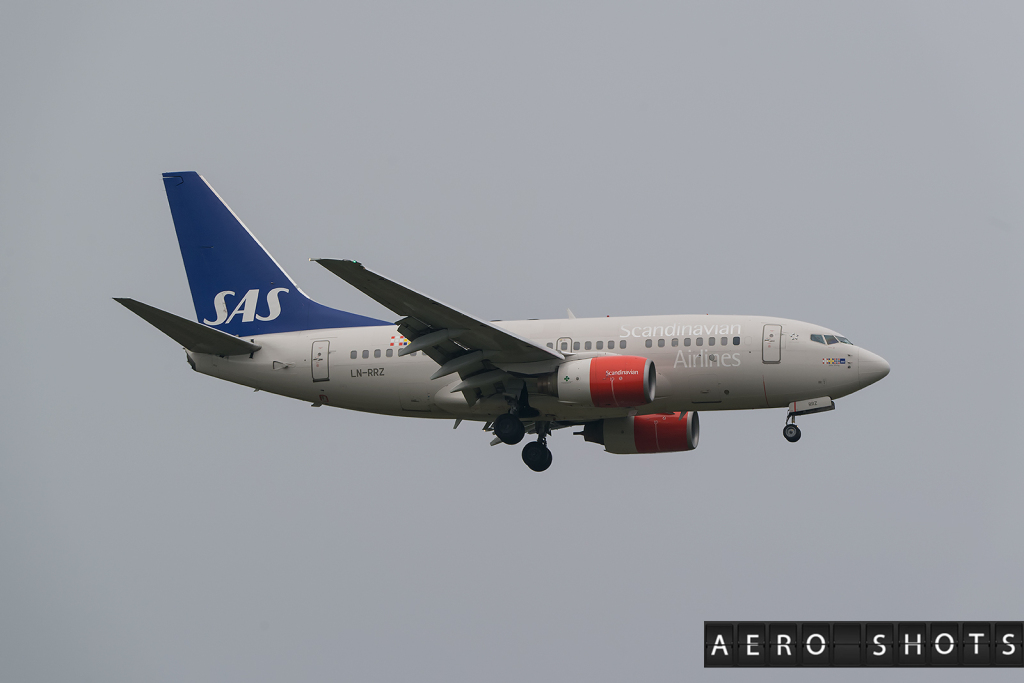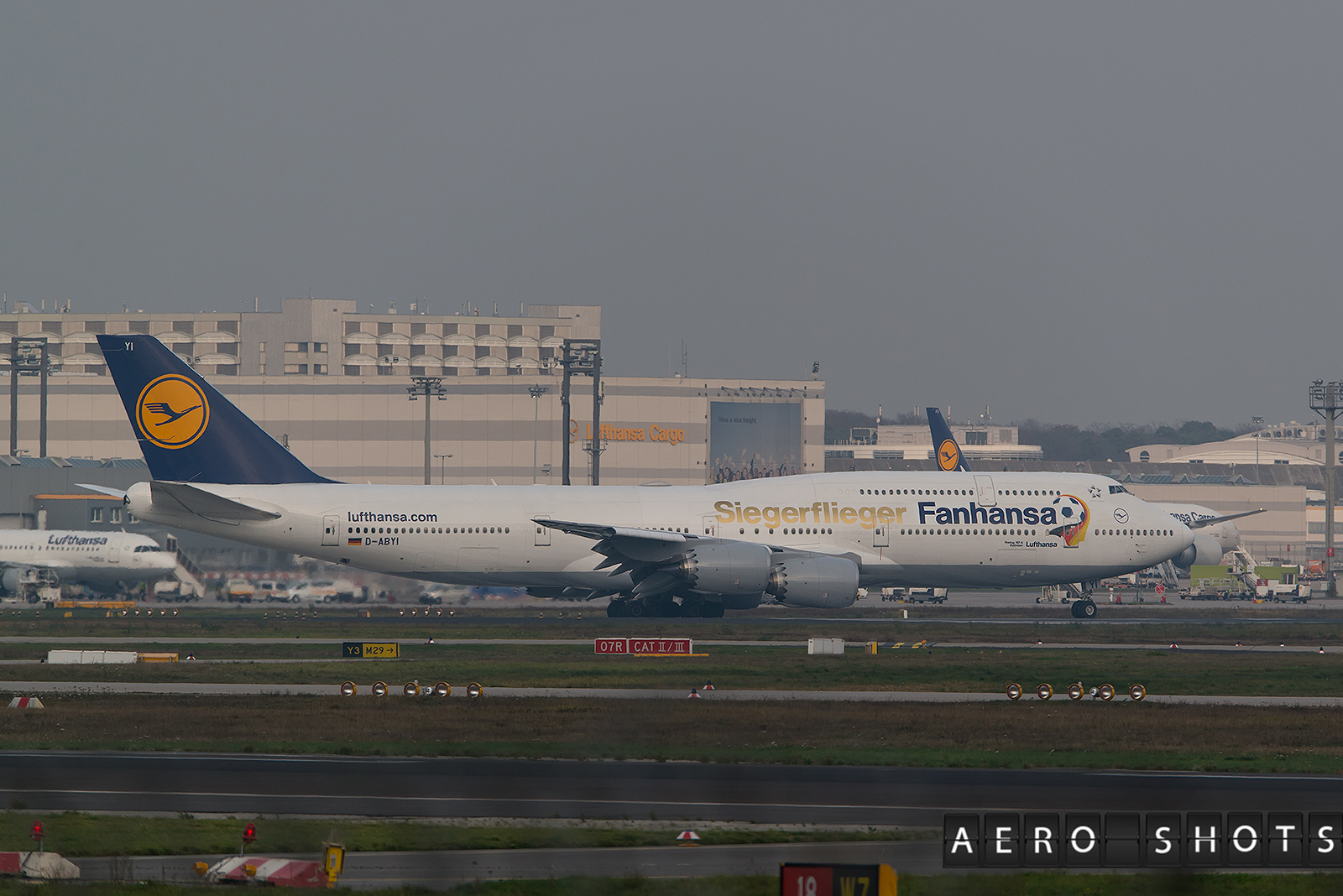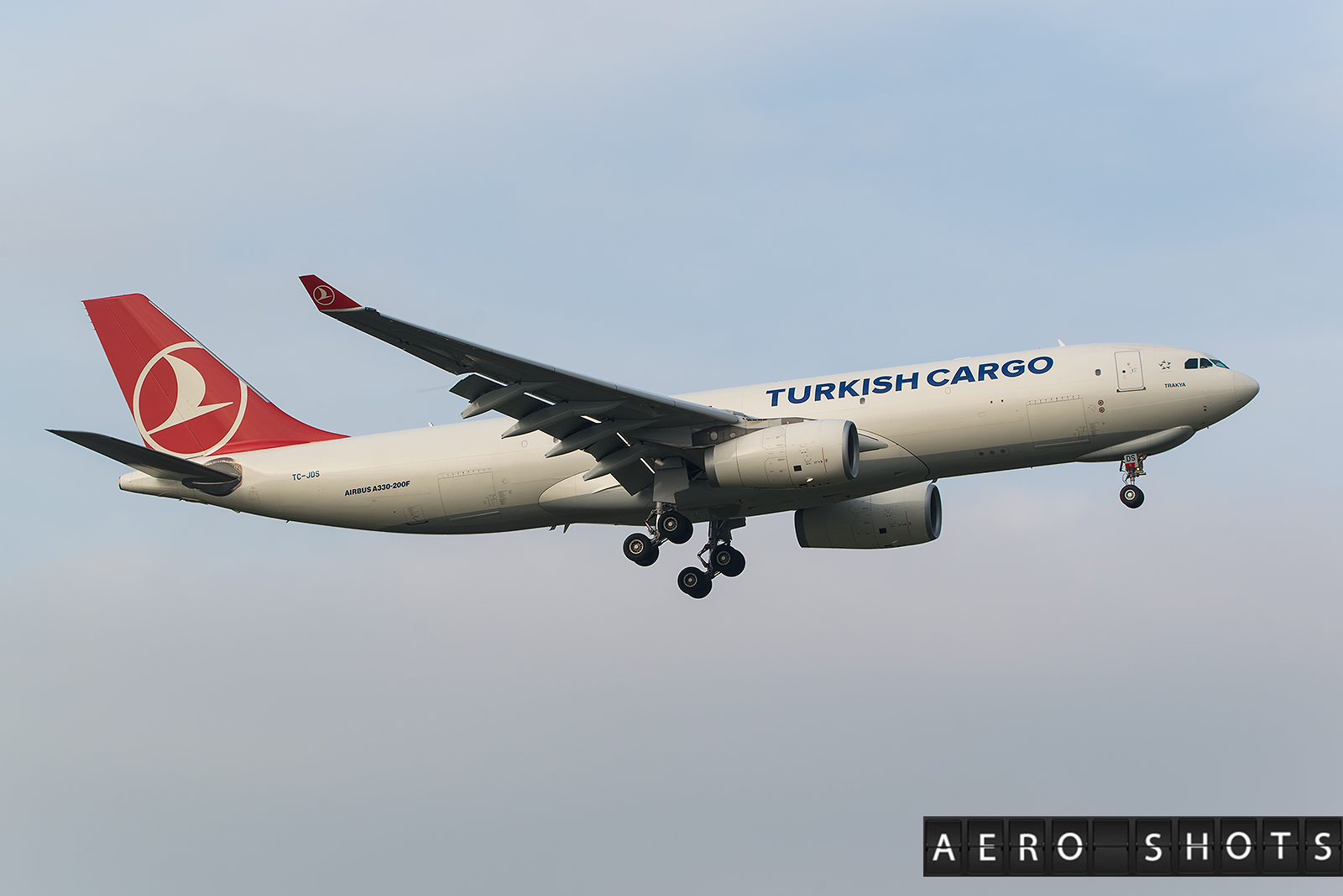
by Lufthansa Flyer | Dec 22, 2014 | Airlines, Airports, Featured, Frankfurt, Photography, Plane Spotting, Trip Reports |
More from my Plane Spotting while in Frankfurt in late November. As in Part I and Part II, I spent most of my time at the Affenfelsen observation platform that is located approximately half way down Runway 18 which is of course a North/South runway and is only used for departures. A few highlights for this part include one of Lufthansa Cargo’s 777 Freighters, a Kuwaiti A340, Etihad’s Formula 1 A340 and a few others unique birds.
To see the previous parts to this series, please click here for PART I and click here for PART II. You can also find my previous Plane Spotting posts in my Plane Spotting Index.

Air Europa’s 7373 EC-JBJ

Emirates’ 777 A6-ENS

Finnair’s A319 OH-LVK

Kuwait’s 340 9K-ANA

Lufthansa Cargo’s 777 Freighter D-ALFB

Lufthansa’s 747 D-ABVU

Lufthansa’s A321 D-AISG

Lufthansa Cargo’s MD-11 Freighter D-ALCD

Lufthansa’s A321 D-AIRO

Qatar Cargo’s 777 A7-BFE

SAS’ 737 LN-RRZ

Singapore’s A380 9V-SKR

Thomas Cook 757

Etihad’s A340 A6-EHJ – Formula I Grand Prix Livery (600mm / Handheld 😉 )


by Lufthansa Flyer | Dec 9, 2014 | Airports, Featured, Frankfurt, Photography, Plane Spotting |
On a recent trip to Frankfurt for a bit of LH business and to attend the FlyerTalk / Vielfliegertreff ‘Advent-DO’, I made sure to block out several hours in my calendar for spotting. Fortunately, ‘FRA’ is very ‘Spotter friendly’ and provides 3 dedicated areas designed to maximize quality spotting opportunities. The three include the observation deck in Terminal 2 (currently closed as part of a renovation to the food court area) and 2 spotting venues located at strategic points just outside the Airport’s fence.
One of these venues is located on the east side of the airport next to the Berlin Airlift Memorial which gives visitors a great vantage point for arrivals coming from the east. The other venue, ‘Affenfelsen’ (Monkey’s Rock?), is a spotting platform that puts you next to the North/South runway that is dedicated only for departing flights. Another advantage of the Affenfelsen site is its proximity to the East/West runways which allows you to capture flights arriving from the west.
For the 2 days that I had time for spotting, I chose the Affenfelsen site since it is easy to access from the airport and provides 2 runways worth of activity. To reach this spot, you simply take the Holiday Parking shuttle from Terminal 1 or 2 to the Holiday Parking Lot located near Affenfelsen. You’ll need to take a 15 minute walk from the parking lot, but its worth that minor effort.
Due to the amount of photos, I’ll publish a few posts to cover the 2 days. Weather on day 1 was overcast with low ceilings and mist that made it a bit challenging, however day 2 made up for it with clear and crisp skies. All of the photos that you’ll see are taken with a Nikon D800 attached to Sigma’s new 150-600mm Super Telephoto lens (click for lens review post). This was the first time I put this lens to use and it performed brilliantly. Even at 600mm and free hand, images were still sharp and ‘usable’! Enjoy!
Click Here to visit my Plane Spotting Archives

AirBridge Cargo 747-8F

Air France’s new HOP! regional ERJ 190

Speedbird’s A321 taxis to a mid-runway departure position

Perhaps the most peculiar sighting that I’ve ever made at Frankfurt. This China Southern ERJ 145 (along with 5 others) had recently been sold to a Russian start up and have yet to be repainted. So no, this ERJ is not flying to Beijing!

No mistaking this Etihad A340 sporting the beautiful F1 livery.

‘Siegerflieger’ was nearly a mile away. It took every bit of the lens’ 600mm to bring this beauty closer!

What is becoming an endangered species, this LH 737 is preparing to depart from a mid-runway position. LH will be retiring the rest of their 737s during 2015.

Yankee Papa, the 1500th 747 to be built by Boeing, is arriving from the west.

‘Yankee Quebec’ is Lufthansa’s newest 747-8i. It was delivered to the airline in August 2014.

Lufthansa’s D-AILF, an A319, rotates for a perfect photo…..

Another LH A319 departing FRA….there would be a few dozen of these! 🙂

Lufthansa Cargo’s ‘Charlie Lima’ arrives from the west during the late afternoon.

TAM’s 777 arriving from Brazil

Thomas Cook’s 767 begins her take off roll…..

Turkish Cargo A330-200 Freighter

Ukraine International’s 737 arriving from Kiev

by Lufthansa Flyer | Nov 25, 2014 | Featured, Photography |
UPDATE: To see the results of using the SIGMA 150-600mm in the field while Plane Spotting, please visit my recent posts on Plane Spotting in Frankfurt: Part I, Part II, Part III, Part IV.
Just one day ahead of my trip to Frankfurt and Vienna, my copy of Sigma’s new 150-600mm lens arrived. I’ve barely had enough time to take it through the process of testing it and comparing it to my Sigma 50-500, but I did manage to spend some time with it tonight prior to packing for the trip tomorrow. With a very rainy and cold day in Michigan, I did not have a chance to take it outside but I did manage to shoot a few images from my deck in between downpours to at least get a sense of what this new lens is capable of.
First Impressions:
Out of the box, it is immediately obvious that this is not your ‘Father’s Sigma’. The build quality is outstanding and attention to detail is impressive. Sigma advertises the lens as being moisture and dust proof, and with all the seals and gaskets I have no doubt that it is. It has a very tight feel (In a good way) to it and you know immediately that you are holding a quality piece of glass. As I compared it to my Sigma 50-500, I immediately noticed the increase in girth and diameter of this lens. It is substantially bigger and quite a bit heavier, but considering the focal length and aperture, this was a requirement.

Side by side with the Sigma 50-500, the 150-600 (attached to camera) is quite a bit longer, wider and heavier……However this is not a negative!

A noticeable difference in lens diameter between the 150-600 (left) and the 50-500.
The lens is an external zoom lens in that the lens extends and contracts externally to adjust for focal length. This is where the lens really begins to show off…..

At full extension, the 150-600 begins to demonstrate just how much bigger it is. In this photo, both lens hoods are attached.
With the 150-600 comes several new technological innovations including the ability to custom program certain settings through a USB docking module (sold as an option). Another new feature is the 2 levels of Optical Stabilization, one for general stabilization and one specific for horizontal panning —- which will really come in hand for Plane Spotting and Cheetah Chasing….
The lens also allows you to lock it at certain focal lengths in order to prevent the lens from creeping. Creeping is the movement of the lens barrel when facing upward or downward; the weight of the lens is usually responsible for this. With the new locking mechanism, you can set it and forget it. You can also unlock the lens from the anti-Creeping mode by simply turning the focal length ring or by pulling or pushing the lens tube. Creep is a major annoyance and Sigma seems to have solved it nicely!
The Tripod collar is an improvement from the 50-500 as well. The collar locks into place every 90 degrees, giving you a lot of flexibility when it comes to mounting the lens on a trip or gimbal. Two things that I did not like though is the fact that you cannot remove the tripod collar AND the space between the tripod mounting arm of the collar and the lens tube is not large enough for your fingers. To me this is important because when I grip my 50-500, I use the tripod collar as a handle. With the new tripod collar I have to adjust my grip.
One other minor annoyance that will go away over time is the fact that the 150-600 focal ring rotates in the opposite direction of the 50-500. My muscle memory will need to be relearned but that should only take a short while to remedy.

Easy to use control panel covers things such as focus selection and optical stabilization. The space between the tripod mount and the lens could be a bit bigger, but I think there’s a way to ‘invent’ a spacer to increase the space.
The lens hood is quite substantial and really increases the the overall length of the lens. It is entirely made of metal, with a locking screw to hold it in place. The forward edge of the hood is rubberized to help cushion the impact should the lens be bumped into. I thought this was a well thought out feature for a lens designed to take abuse in the field.

Sturdy and well thought out lens hood.

Rubberized leading edge helps to protect the lens from bumps and bruises….
As I mentioned earlier, today was not a great day for taking photos with the new lens. I did manage a few shots in between rain showers as well as a few indoor photos. My first impression is that the lens is quite excellent through all focal lengths. My test photos by no means are ‘scientific’ in nature but I like the photos that I took considering that the lens is new to me and my camera, and conditions were not ideal. Each photo below will have a bit of an explanation as to focal length, distance and crop factor….

This tree was about 30 yards from where I was standing. The lens was extended to 600mm and the ISO was 2400 +/-. Not bad considering the focal length and ISO. Low noise amid rainy conditions.

A 50% crop of the same image is still very respectable. Had I used a tripod, the bird would no doubt be very sharp.

Not exactly a glamorous target, this Sprinkler Head would demonstrate how sharp the lens is. This shot was taken at 600mm and 3200 ISO.

A VERY tight crop reveals the Bar Code number….perfectly legible….the sprinkle head was 30 yards away, focal length was 600mm.

This 2 liter was sitting on my kitchen counter, 15 feet away from me. At 600mm, and 5000 ISO, this shot is tack sharp. 600mm, tack sharp….not often do those words run in the same sentence!
So summing things up, my first impressions of this lens are extremely positive. It seems to be living up to its hype and I’m looking forward to putting it through its paces in Frankfurt this week where the lens will get a heavy dose of plane spotting. I’ll have 3 days to run a couple of thousand images through it and I’ll have a follow up report to talk about how it performed. I’m a bit nervous about leaving my proven 50-500 at home, but I think I may have found the next generation lens to replace it with…..
For more technical details, please take a look at Sigma.com.















































